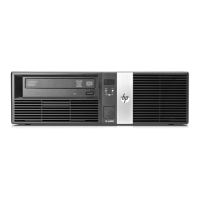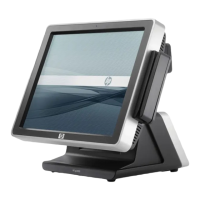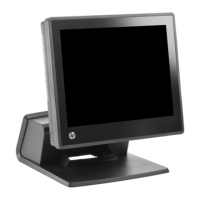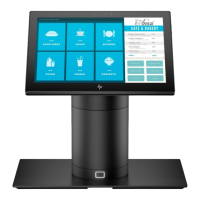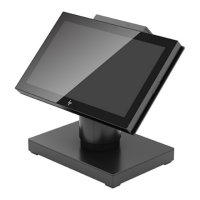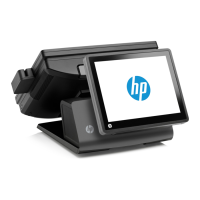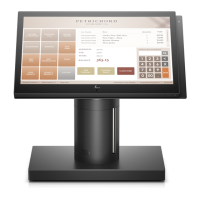Keyboard Control
Table 3-1.
ENTER
Key
Operation
(Continued)
BLOCK PAGE MODE, FORMAT MODE
AutoTerm(J)
zNO
Inh
DC2(H)
=YES
The cursor is repositioned to
the
"home up" position.
All unprotected
and
transmit-only
characters
through
the
first
subsequent
block
terminator
or
non-
displaying
terminator
or
through
the
end
of display
memory (whichever
is
encountered first)
are
trans-
mitted
to
the
host
computer as a
series
of blocks, each
block corresponding to one unprotected field.
Auto
TermeJ)
=
NO
Inh
DC2CH) =
NO
The cursor is NOT repositioned. All unprotected
and
transmit-only
characters
through
the
first
subsequent
block
terminator
or
non-displaying
terminator
or
through
the
end of display memory (whichever is en-
countered first)
are
transmitted
to
the
host
computer
as a
series
of
blocks,
each
block corresponding to one
unprotected field.
Auto
Term(J)
=
YES
If
the
cursor is
currently
within
an
unprotected field,
the
terminal
inserts
a non-displaying
terminator
at
that
position
and
then
moves
the
cursor
backward
to
the
first preceding block
terminator
or
non-displaying
terminator
that
is
not
in
a protected field (or homes
the
cursor
if
none is found). All unprotected
and
trans-
mit-only
characters
from
the
new
cursor
position
through
the
first
subsequent
block
terminator
or non-
displaying
terminator
(whichever is encountered first)
are
transmitted
to
the
host
computer
as
a
series
of
blocks, each block corresponding to one unprotected
field.
If
the
cursor is NOT
currently
within
an
unprotected
field,
the
terminal
merely
sounds
the
bell
and
transmits
a block
terminator
to
the
host
computer (or
a
<DC2)
followed
by
a
block
terminator
if
the
DC1/DC2/DC1
handshake
is enabled).
ASCII control codes
within
the
fields
are
transmitted.
Video
enhancement
escape sequences,
alternate
character
set
escape sequences,
and
field definition escape sequences
within
the
fields
are
NOT
transmitted.
After each field (except
the
final one),
the
terminal
sends a
field separator. After
the
final field,
the
terminal
sends a
block terminator.
Send Display ( <
ESC)
d )
From
a
program
executing
in
a host computer, you
can
trigger
a block
transfer
of
data
from display
memory
to
the
host
computer
by
issuing
the
following escape sequence:
<ESC>d
3-10
If
the
end
of display memory is
encountered
before locating
an
unprotected
field,
the
terminal
merely
sends
a block
terminator.
The type
of
handshaking
used is
determined
as
follows:
InhHndShkCG)
(ignored)
inhDC2CH)=NO
---)DC1/DC2/DC1
I
nh
DC2(H)
=
YES
- -
-)
no
hand5hake
MODIFY MODE
Note
that
modify
line
and
modify
all
modes
are
functional
only
when
the
terminal
is configured for
character
mode
operation. Whenever block mode is enabled,
the
II1II
key
operates
as
described for block mode
earlier
in
this
table.
The
cursor
is repositioned as follows:
1.
To
the
logical start-of-text pointer;
or
2.
To
the
designated
start
column
(Start
Col)
ifthere
is no
logical start-of-text pointer.
All
characters
through
the
first
subsequent
block ter-
minator
or
non-displaying
terminator
or
through
the
end
of
the
line
(whichever is encountered first)
are
transmitted
to
the
host
computer as a block.
ASCII control codes, video
enhancement
escape sequences,
alternate
character
set
escape sequences,
and
field defini-
tion
escape sequences
are
all
transmitted
if
encountered.
If
the
operation
is
terminated
by
encountering
the
end
of
the
line,
the
terminal
sends a <CR) (or a <CR><LF>
ifauto
line
feed mode is enabled);
the
cursor
is repositioned to
the
column
at
which
the
transmission
began
and
a
line
feed is
performed
if
auto
line feed mode is enabled.
If
the
operation
is
terminated
by
encountering
either
a
block
terminator
or
a non-displaying
terminator,
the
ter-
minal
sends a block
terminator
followed by a
<CR>
(or a
<CR><LF>
if
auto
line
feed mode is enabled);
the
cursor
remains
positioned
immediately
following
the
terminator.
The
type
of
handshaking
used is
determined
as follows:
InhHndShkCG)
i5
ignored.
inhDC2CH)=NO
--->DC1/DC2/DC1
I
nh
DC2CH) =
YES
- -
-)
no
hand5hake
With
the
following
three
exceptions,
the
resultant
data
transfer
is performed
as
though
the
II
key
had
been
pressed:
1.
The
cursor
is NOT repositioned.
The
data
transfer
al-
ways begins
at
the
current
cursor
positiot,J-.
c
(
(
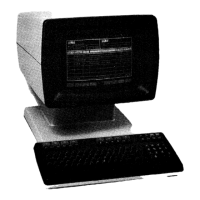
